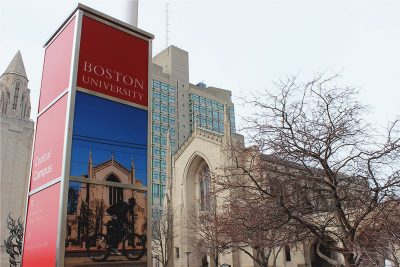
Boston University ranked 7th among the 128 members of the American Talent Initiative for the largest increase in enrolling students with Pell Grants, according to an ATI report released Wednesday.
The federal government provides Pell Grants to students with financial need to help pay for their college education. The Pell Grant limit for the 2019-2020 award year is $6,195, meaning colleges often need to provide further financial aid to meet the needs of these students.
BU enrolled 597 more Pell Grant recipients for the 2018-19 school year than they did in the 2015-16 school year, according to the ATI report.
Colin Riley, a BU spokesperson, said Robert Brown, president of the university, has focused on making education more affordable during his administration.
“It’s been a goal of President Brown and the senior administration to address the real difficult issues in higher education today,” Riley said, “about affordability, accessibility and achievement.”
While the number of Pell Grant recipients enrolled at BU has increased, this was not an intentional occurrence. Riley said the university considers more than financial status when evaluating applications.
“The way we review applications is that we review them holistically,” Riley said. “We try to get a sense of the individual by looking at them in their entirety.”
Riley also said BU is able to reach out to a greater number of prospective students, specifically those who cannot afford to tour, through the school’s website and other programs.
“Many prospective applicants take advantage of the website and a number of sources to visit the university virtually,” Riley said. “It’s not unusual that a student’s first time on campus is after they’ve been accepted and they come to orientation.”
Billi Solis-O’Brien, communications manager of Bottom Line, a non-profit organization that advises low-income first-generation high school students on how to find affordable colleges, wrote in an email that affordability is not determined by a college being public or private, but the college’s financial aid office. She also wrote that Bottom Line works with a specific list of schools they know will provide financial aid, with BU being one of them.
“A private college tuition may be much higher, but they may offer better financial aid to the student population we serve,” Solis-O’Brien wrote. “We work with a list of target colleges.”
Tyrone Brown, access program director for Bottom Line, wrote in an email that BU meets 100 percent of financial need for public high school graduates from the city of Boston.
“BU has met 100 percent of calculated need for students graduating from a Boston public high school (through the BU Community Service Award),” Brown said, “which represents an overwhelming majority of the students that we work with — so BU has been a great choice financially for our population of students.”
Noah Katcher, a freshman in the Questrom School of Business, said while BU has been extending financial benefits to its student body, it should extend its scholarship deadline to give more students the opportunity to make college affordable.
“I think other schools are good at providing financial aid, but BU is very tough,” Katcher said. “The scholarship application deadline is in December, when it should be the regular deadline with all your applications.”
Jacqueline Gomez, a freshman in the College of Arts and Sciences, said BU should be spending money on financial aid as well as its other projects.
“We have such a good gym. We’re refurbishing everything in the GSU,” Gomez said. “[BU] can give some people some money to come to school. We’re struggling.”




